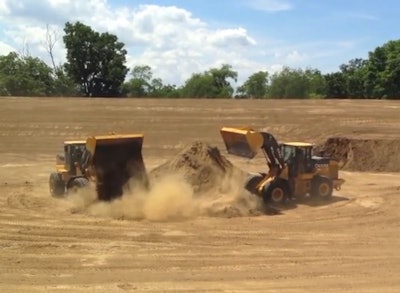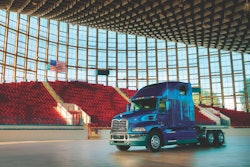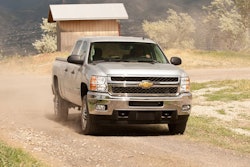
“We’re finding hybrid interest among users with high hour shift work, and those in environmentally sensitive areas,” says John Chesterman, Deere’s global product manager, four-wheel drive loaders. The hybrid—which uses a combination of diesel and electrical power—carries a premium over a conventional machine of around $53,000, he says. In high load applications, depending on the price of diesel, Deere estimates the return on investment in two to three years.
In full-on demos against its conventional 644K (see video above), which uses a power shift torque converter, Deere showcased the machine’s lower noise—2 decibels inside the cab and 3 decibels lower outside the cab, representing a 50 percent reduction. “Users tell us they can comfortably talk on the phone with the machine at idle,” Chesterman reports.
Interestingly, one of Deere’s major talking points is what hasn’t changed from the conventional 644K: the hybrid has essentially the same bucket size, dump height, operating weight and net peak horsepower.
What has changed, however, is how much power is needed: only a 6.8-liter Deere PowerTech 6068 engine versus a 9-liter in the conventional 644K.
“Even though the net peak power is essentially the same, we’re constantly hearing from operators that they feel the hybrid has more power,” Chesterman says. “There’s nothing unique with the engine, it just runs at a constant speed, with a max of 1,800 rpms. With the conventional, we need a lot of engine torque, up to 2,250 rpms, to respond to loads. On the hybrid, the pushing power has nothing to do with engine speed.”
Chesterman compared the expected hybrid fuel consumption reductions on three typical loader operations: truck loading, 35 percent; stockpiling, 16 percent; and transport, 10 percent. A machine in idle is expected to see a 24 percent consumption reduction.
“Depending on a customer’s needs, they could run the machine at just 1,500 rpms, cut their fuel consumption in half, and only see a 10 percent reduction in productivity,” he says.













